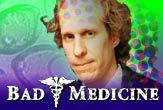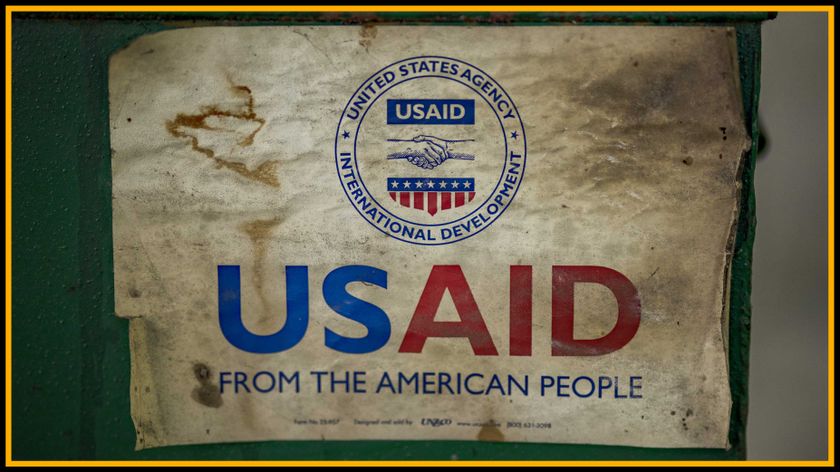Bitter Battle over Truth in Sweeteners

McNeil Nutritionals, the makers of Splenda, the most popular-selling artificial sweetener in the United States, is feeling bitter these days. Merisant, the makers of Equal, sued Splenda in France and in the United States over Splenda's slogan, "made from sugar so it tastes like sugar," which Equal and an unlikely ally, the Sugar Association, say is misleading. Last week a French court sided with Equal, ordering Splenda to punt the slogan in France. Then on Friday, just moments before a U.S. jury was about to read its verdict, Splenda, sensing defeat, reached an undisclosed settlement with Equal. The last-second settlement was highly unusual, forcing the judge to instruct the jury never to speak of its verdict. And both companies are mum on the settlement, which insiders say will cost Splenda millions of dollars. It is unclear who the winner is, though, as all sides have emerged looking sour. Sweet slogan Splenda, approved by the Food and Drug Administration in 1998, is known chemically as trichlorosucrose. Splenda's makers like the alternate name, sucralose, which was created to sound more like sucrose, the chemical name for table sugar. Sucralose isn't sucrose, much like cellulose isn't celery. There are several ways to make trichlorosucrose. One can start with raffinose, which is a carbohydrate containing three different kinds of sugar molecules, or one can use sucrose. Regardless, the process ultimately involves replacing three oxygen-hydrogen groups in a sucrose (sugar) molecule with three chlorine atoms. Hence the claim that Splenda is made from sugar. From a responsible chemist's standpoint, the Splenda slogan is ludicrous. This is like the automobile industry saying that ozone, O3, is as healthy as air because it is made from oxygen, O2. Rock candy is made from sugar, and the sugar is still there. But the sugar is Splenda is merely a chemical placeholder needed to added chlorine, the substance that makes trichlorosucrose more than 200 times sweeter than sugar. That is, sugar doesn't make Splenda sweet; chlorine does. Lesser of two evils? Splenda's makers packaged their product to sound more natural, knowing consumers worry about alleged health consequences of other synthesized sweeteners, such as Equal (aspartame) or Sweet & Low (saccharine). And the plan worked. Within two years after its introduction, Splenda overtook Equal and now commands about two-thirds of the artificial sweetener market. Just because a synthesized molecule is similar to a natural sugar molecule doesn't make it safe. Just a one- or two-atom change makes a big difference when ingesting water versus hydrogen peroxide, beer versus wood alcohol, or carbon dioxide versus carbon monoxide. The true test of safety lies in long-term health studies, not wordplay. Splenda does have dozens of studies to demonstrate that it is generally safe for human consumption, so many countries have approved its use in beverages and baked goods. Yet all sweeteners, artificial or natural, have pluses and minuses. Sugar is associated with obesity, tooth decay and hyperactivity. One must wonder whether such a "chemical," atom for atom, would be approved by the FDA if it were made in a lab. Recent case studies have revealed that Splenda, like Equal, can cause migraine headaches, but the incidence is rare. Sugar can make bitter foods more palatable, which is why the World Health Organization allows some added sugar as part of a healthy diet. Splenda, Equal and saccharine have been a godsend to diabetics and dieters. Some folks will accept a remote chance of developing cancer, although none of these products have been shown conclusively to cause human cancer. Stevia in brevia The Sugar Association funds the "Truth about Splenda" website, with so-called frequently asked questions like "Is the chlorine in Splenda any different than the chlorine used in swimming pools?" Oh, I'm sure they get this question all the time. The answer doesn't explain that table salt is half chlorine. The Sugar Association's own sunny website is filled with lots of smiling people with surprisingly no sign of tooth decay. They are as guilty as the artificial sweetener manufacturers in downplaying the harm of over-consumption. It is a mystery why stevia, a South American plant more than 300 times sweeter than sugar, remains illegal for use as a sweetener in the United States. This essentially zero-calorie natural product has been used for decades in many countries and is deemed safe by the WHO. Could it be that the mighty U.S. sugar and corn syrup industries have pressured the FDA not to approve it? Some U.S. stores are now carrying stevia as a dietary supplement. But stevia growers are bit players in the billion-dollar sweetener market dominated by slick ad campaigns.
Christopher Wanjek is the author of the books “Bad Medicine” and “Food At Work.” Got a question about Bad Medicine? Email Wanjek. If it’s really bad, he just might answer it in a future column. Bad Medicine appears each Tuesday on LIveScience.
- The Biggest Popular Myths?
Sign up for the Live Science daily newsletter now
Get the world’s most fascinating discoveries delivered straight to your inbox.

Christopher Wanjek is a Live Science contributor and a health and science writer. He is the author of three science books: Spacefarers (2020), Food at Work (2005) and Bad Medicine (2003). His "Food at Work" book and project, concerning workers' health, safety and productivity, was commissioned by the U.N.'s International Labor Organization. For Live Science, Christopher covers public health, nutrition and biology, and he has written extensively for The Washington Post and Sky & Telescope among others, as well as for the NASA Goddard Space Flight Center, where he was a senior writer. Christopher holds a Master of Health degree from Harvard School of Public Health and a degree in journalism from Temple University.











